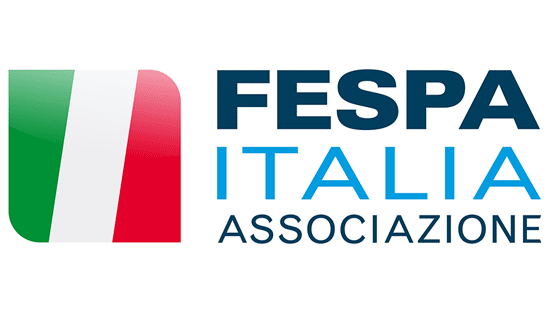Health and safety: are you doing enough?

Printers must ensure that they are protecting employees from trips, slips and hazardous chemicals. But are your processes fit for purpose?
Being a responsible print business owner, the chances are that you are already operating in line with many of the major health and safety rules. Your staff will be wearing personal protective equipment (PPE) when working with certain pieces of machinery or handling chemicals and ensuring that appropriate safety wear is being used where appropriate. But are you thinking smartly enough about risk in the workplace? Control, says the UK’s Health and Safety Executive (HSE), is only adequate when the risk of harm “is as low as reasonably practicable”.
According to the UK’s Health and Safety Executive and Envirocare:
- Manual handling is the most common accident in print, accounting for 27% of all reports.
- Contact with machinery, and slips and trips, rank joint second, making up 22% of all accidents in the industry.
- The health effects of chemicals used in printing include dermatitis, asthma and central nervous system disorders.
Fail to prepare, prepare to fail
In the UK, the Health and Safety Executive (HSE) is responsible for the promotion, regulation and enforcement of health, safety and welfare in the workplace. The HSE has a separate sub-section for the printing industry, setting out a number of factors to be aware of in print houses.
One of the key messages from the HSE is that health and safety isn't complicated and much of it involves common sense on the part of both the employers and their staff.
If you employ five or more people, the plans should be put down in writing in the form of a health and safety policy statement
The HSE cites manual handling, slips and trips, and contact with machinery as the main causes of accidents in the print sector. In terms of how printers can help staff avoid such incidents and other accidents, the HSE advises all employers to have plans in place to manage health and safety.
“If you employ five or more people, the plans should be put down in writing in the form of a health and safety policy statement,” the HSE advises. “Health and safety doesn’t have to be complicated.”
That said, it is critical for printers to keep up to date with the latest changes in law and certain alerts distributed by the HSE. For example, at present, the HSE has a focus on handfed platens after the death of two workers in the UK and three in Germany, Canada and the US since 2007. All five died by being crushed by the closing platens when the machine was in dwell mode. The HSE advises guarding options, daily checks, periodic inspections, and both isolation and training procedures. After platen safety management, the second key duty for printers is the control of substances hazardous to health, or COSHH.
Do nothing and you are inviting trouble
Martin Hicks of graphics and projects company HIXFIX urges employers in the print and related sign-making sectors to ensure they are operating in line with current regulations.
Hicks said: “Be aware of the guidelines, especially new ones, and read them all to be sure you are up to speed – it doesn’t take long. Do nothing and you are inviting trouble.”
He recommends that printers in the UK become a member of the FESPA UK association. This way, they can ensure they are being kept in the loop on any major regulatory changes that may impact the way their business operates.
Can industry developments impact H&S?
Regulations for health and safety can change at any point, and printers have a duty to keep up to date with any new guidelines published by the HSE. But what about developments in the industry itself? With the technology coming to market all the time, can this hamper health and safety progress?
The HSE seeks to manage such developments using a method known as ‘horizon scanning’, whereby it uses knowledge sharing and a range of futures activities to both anticipate and keep pace with change across all industries.
COSHH
COSHH regulations cover chemicals, fumes, dusts, vapours, gases and germs that can harm the body through breathing, being absorbed through the skin, swallowing and acting directly on the body at the point of contact, especially the skin. Dermatitis is particularly common in printing because of exposure, solvent-based cleaners can be absorbed through the skin, and isocyanate-based adhesives in frame-making can cause asthma. Methyl ethyl ketone and propanol in inkjet printing can cause abnormal heart rhythm and affect the liver and kidneys after long-term exposure.
The principal requirements for employers are that:- You should carry out a suitable and sufficient assessment of the risks to the health of your employees and any other person who may be affected by your work.
- You should ensure that exposure is prevented or, when this is not reasonably practicable, adequately controlled.
The effects of exposure to these substances vary considerably – and the HSE has established legally binding workplace exposure limits (WELs) that are averaged out for both short-term (15 minutes) and long-term (8 hours) periods of work in regulation EH40. WELs should not be considered a hard and fast line between safe and unsafe: any good control practice should keep exposure to a minimum.
The principles of good control practice include:
- Minimising emission, release and spread of substances hazardous to health
- Taking into account all relevant routes of exposure – inhalation, skin and ingestion – when developing control measures
- Controlling exposure by measures that are proportionate to the health risk
- Checking and reviewing regularly all elements of control measures for their continuing effectiveness
- Informing and training all employees on the hazards and risks from substances with which they work, and the use of control measures developed to minimise the risks.
Many hazardous chemicals have COSHH safety data sheets, containing information on handling, storage and first aid measures in case of accident. They also contain guidance on transporting the substance, its stability and reactivity and disposal considerations. Printers will need these sheets to complete a free and confidential COSHH assessment here, as required by COSHH regulation. This regulation is not just a hurdle to overcome but an absolutely integral part of safe, modern working practices – avoiding inflicting long-term harm or suffering on employees in the form of respiratory disease or skin complaints.
Safety data sheets should be kept in a safe, accessible place. They form a useful library of how to handle materials and should be kept in clearly identified files with the accompanying risk assessment in a location where everyone has access.
The COSHH assessments may recommend a monitoring strategy – apart from assessing health risk and checking the effectiveness of your control measures, there are good insurance reasons for doing so. WELs relate to personal exposure, so air monitoring should not be done from a fixed point in the workplace but seek to establish the concentration of airborne substances in the employee’s personal breathing zone. Biological monitoring would measure how much of a substance has entered the body.
Another consideration is the effects of mixed exposures on workers – two or more different substances can have an additive effect and reinforce each other. In these cases, there is a requirement to reduce exposure to as low as is reasonably practicable.
Think smart
Lower risk by thinking smart: consider switching to safer chemicals rather than looking to contain harm through personal protective equipment or fume extraction. If you are using isocyanate-based inks, check the safety data sheet and choose one containing MDI, which is less volatile. Or even better, avoid those inks altogether. Could you use water-based rather than solvent-based inks? Would a vacuum cleaner pick up dust more quickly than a brush?
You could also think about modifying processes to, for example, minimise skin contact: segregating clean and dirty areas, wiping ink containers clean after use, laundering work clothing regularly and changing the physical form of products – from dusty powders to granules, for example.
It is rare you will be able to limit exposure completely, but following good practice principles (listed above) will help reduce risk as far as possible. You may already have processes in place, but they need to be constantly re-assessed: are they still fit for purpose? How can you make things even safer?
Resurgent risks
Some vulnerabilities printers may not even have considered yet. Threats to cyber security are now on the rise as hackers target safety-critical electronic control systems.
The HSE says: “Attacks by hackers, disgruntled employees or criminals are commonplace but are to date mostly being directed at activities such as spamming or denial of service or for monetary gain involving identity theft, fraud, extortion and the like.
“However, the same methods by which these attacks are carried out can readily be adopted to seriously disrupt processes and services in a way which could lead to major health and safety risks for operators and the public.”
Hicks partly agrees, saying he does not believe leaps in print technology are the issue, but instead advancements in health and safety, and a wider need in society to manage all risks. This adds to the health and safety workload for employers as a result.
Mental health – it’s good to talk
Apart from the more obvious physical health and safety focus areas for printers, one of the most talked-about aspects in recent years is mental health. While this is still regarded as something of a ‘newcomer’ to the health and safety scene, there is no underestimating the importance of ensuring your workers are well looked after.
As the HSE advises, work-related stress is one of the more common, general mental health concerns that printers should be aware of. The HSE estimates that over 11 million workdays are lost each year because of stress at work, despite employers having a legal duty to protect employees by doing a risk assessment and acting on it.
In addition to risk assessments, the HSE recommends using its approved posters to offer help and guidance to workers, while the agency also has a Management Standards approach, tackling stress workbook and ‘Talking Toolkit’ to further assist employers.
Hicks agrees this is likely to be a growing health and safety concern in years to come, but warns that while it is easy to produce blanket policies, it is “not always obvious how root out the cause”.
He said: “I’m sure FESPA will be addressing this in the near future, and try to offer best guidance on its far-reaching outcomes to its members.”
Room for improvement?
The HSE cites a number of ways to ensure health safety in the workplace, with risk assessments, method statements and company policies among the most effective. However, Hicks raises concerns over the current system, saying it is mainly a case of ‘box-ticking’ to keep inspectors happy.
Health and safety policies are only ever any good if they are prepared following a detailed understanding of the process
Hicks says: “To be honest, in most cases risk assessments are written without ever being read; neatly filed and a box ticked in the customer compliance column. They fulfil a regulatory need, but they do not necessarily make the job safer.
“Health and safety policies are only ever any good if they are prepared following a detailed understanding of the process. Once written, it becomes the reference point, but any transgression should be re-tested to understand why this or that happened. It should be a constantly changing document, not just cut and pasted from Google as many are.”
This is perhaps where there is room for improvement, not just in terms of health and safety in print, but on a wider scale. It’s all well and good having things such as risk assessments and policies in place, but if they are only there to satisfy the inspectors, what real purpose do they serve?
It’s up to the printer to take action themselves; it’s down to you to ensure your staff are happy, healthy and safe at work. Be proactive in your approach to health and safety, and keep up to date with any new guidance from the HSE or your national health and safety body to ensure you aren’t missing out on any key advice.
Beyond the scope of being genuinely interested in employee wellbeing it is worth noting that failure to comply with legislation can result in immediate enforcement notices that will force the business to cease until corrective action takes place. This of course can be extremely detrimental to the business process and can be accompanied by further action such as large fines and in the most severe cases the imprisonment of company directors.
Become a FESPA member to continue reading
To read more and access exclusive content on the Club FESPA portal, please contact your Local Association. If you are not a current member, please enquire here. If there is no FESPA Association in your country, you can join FESPA Direct. Once you become a FESPA member, you can gain access to the Club FESPA Portal.
Recent news

How AI can benefit your data collection
Printers are collecting data about everything from costs to customers and inventory. But how can AI help you to make the most of that?

No minimum order: the growth of DTF decoration
Andy Rogers at Stahls’ UK and Europe, garment decoration firm based in Braintree, UK and Dillingen, Germany, on the cost and speed benefits of direct to film (DTF) printing.

The design democracy: AI, creativity and interior décor
We spoke to Matt Fletcher of John Mark Ltd and Cheryl O’Meara from the Print Pattern Archive about combining age-old techniques with artificial intelligence (AI) to create exciting new motifs for luxury wall coverings.
